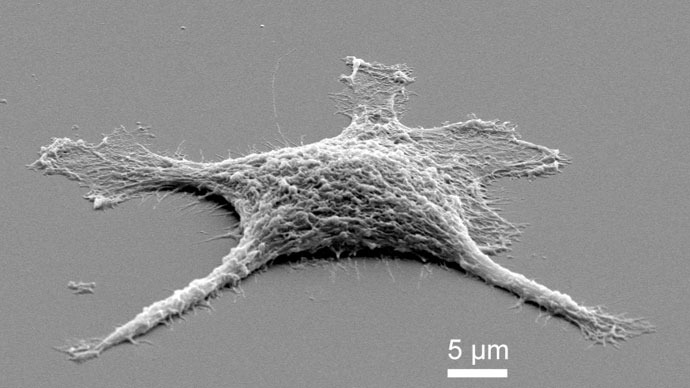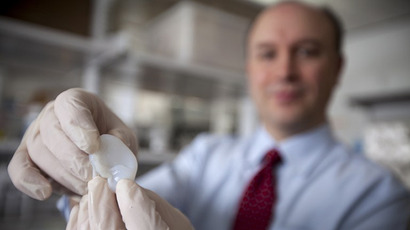‘Zombie cell’ mates biology and chemistry at nano-scale

US researchers developed a process that coats a living cell with silica ‘armor’, creating a near-identical inorganic duplicate. This ‘zombie cell’ technique has the potential for building complex nano-scale machines using life as blueprint.
The process developed at the University of New Mexico is relatively simple. The team suspended living mammalian cells in a petri dish and added mild solution of silicic acid. One of the acid’s byproducts softens the protective lipid casing of the cell and makes it porous enough for the silica to flow in.
The acid then, in a process ‘still partially obscure’, embalms every organelle in the cell from the micro- and down to nanometer scale, covering them with a sort of silica armor. The resulting cell/silica composite can be then heated to either evaporate the protein ‘mold’ and created a near-perfect silica replica of the cellular structure.
Its most immediate use is long-lasting preservation of biological samples. But potentially the technique can be used to fabricate complex useful nanomachinery, says Bryan Kaehr a materials scientist at UNM’s Sandia National Laboratories.
“It’s very challenging for researchers to build structures at the nanometer scale,”he said. “We can make particles and wires, but 3-D arbitrary structures haven’t been achieved yet. With this technique, we don’t need to build those structures — nature does it for us. We only need to find cells that possess the machinery we want and copy it using our technique. And, using chemistry or surface patterning, we can program a group of cells to form whatever shape seems desirable.”
The alternative is to heat the composite without oxygen and turn the protein into porous conductive graphitic carbon supported by the silica coating. The silica can then be dissolved living a carbon structure that can find its use in fuel cells, decontamination and sensor technology.
If the composite isn’t heated, there are possible applications too. For instance, biological catalysts – the enzymes – must retain a certain shape to trigger chemical reactions. The silica coating preserves the structure at temperatures undreamed of by nature while still able to carry out reactions.
“Our zombie cells bridge chemistry and biology to create forms that not only near-perfectly resemble their past selves but can do future work,” Kaehr says.
The team reported their finds in the Proceedings of the National Academy of Sciences (PNAS).














